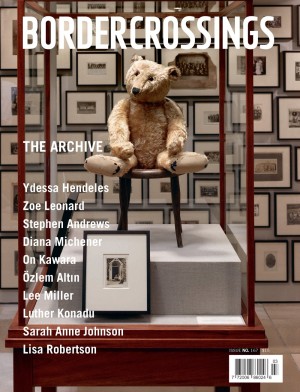Crossovers
-
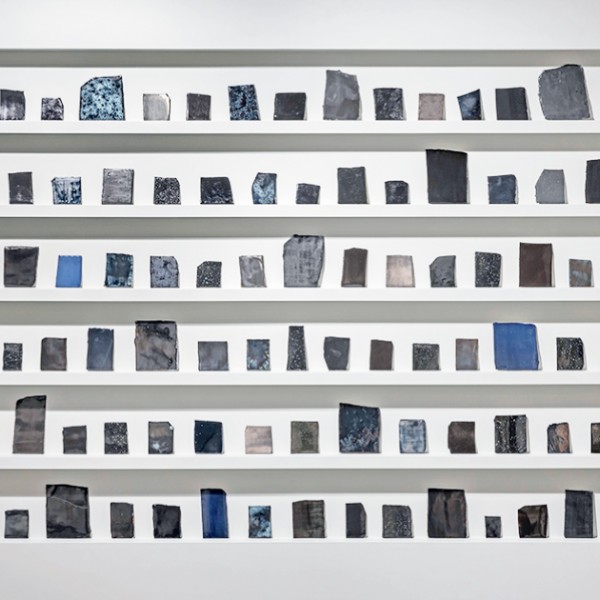
Hajra Waheed
Certainly the most audience- pleasing but also one of the most thematically revealing works in Hajra Waheed’s “Hold Everything Dear” is You Are Everywhere (a variation), 2012–19, an immersive installation inviting audiences to lie on a wooden floor, which is lit to resemble a starry sky.
-
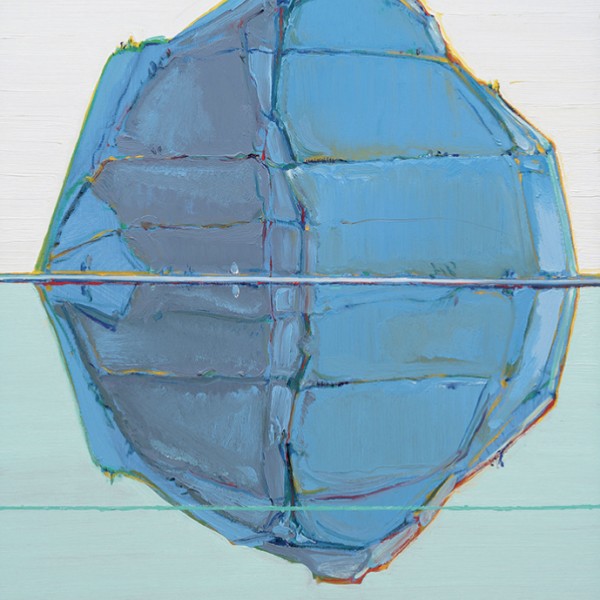
Wayne Thiebaud
Accompanied by a small group of drawings, “Mountains 1965–2019” was a show of landscape paintings by Wayne Thiebaud, ranging across the titular span, at Acquavella Galleries in Manhattan, in November and December of 2019.
-
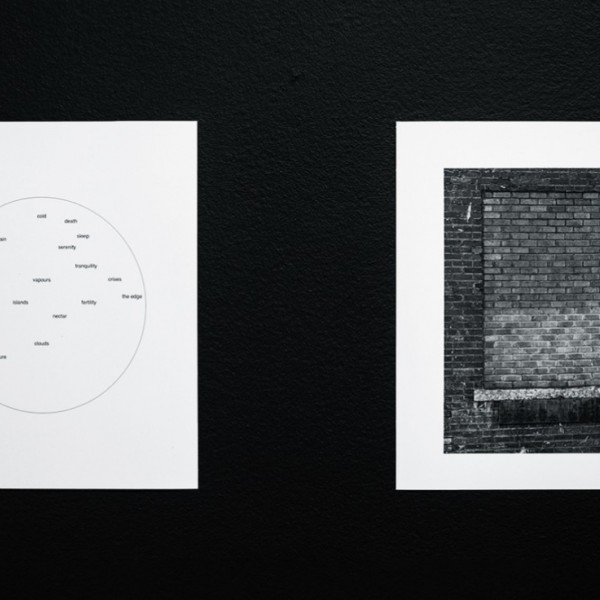
Sylvia Matas
In Sylvia Matas’s exhibition “Stop the Clock and Open Every Window” (YYZ Artists’ Outlet), the walls of the gallery space divide the work into four neat groups. This distinction appears at first to replicate divisions among media (drawing, photography, text, video, paper cut-out), but each wall elides such neat categorization.In Sylvia Matas’s exhibition “Stop the Clock and Open Every Window” (YYZ Artists’ Outlet), the walls of the gallery space divide the work into four neat groups. This distinction appears at first to replicate divisions among media (drawing, photography, text, video, paper cut-out), but each wall elides such neat categorization.
-

“About Face: Photography by Cindy Sherman, Laurie Simmons and Rachel Harrison”
This welcome and timely gathering of the works of three important American feminist artists who have all engaged in a deep and sustained dialogue with the history of female representation—Cindy Sherman, Laurie Simmons and Rachel Harrison—constitutes a united front against imagistic orthodoxies and stereotypes.
-

Mona Hatoum
Mona Hatoum’s context is well known: she grew up in Beirut in a Palestinian family who had fled Haifa in the face of Israeli intimidation. In 1975 she visited London, found she could not return to Lebanon due to the outbreak of civil war and has remained in Britain since.
-

Matthew Wong
Matthew Wong’s superb exhibition “Blue” opened at both KARMA gallery spaces in New York City in November 2019. The gallery showed framed gouaches on paper in the smaller space and oils on canvas in the larger.
-
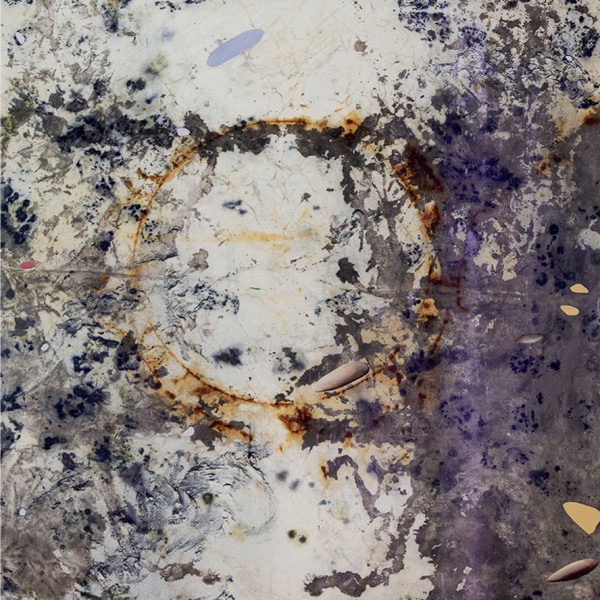
Gillian King
Gillian King’s exhibition “Sediment” at Galerie Nicolas Robert comes at exactly this moment. Here, the stark white walls and grey concrete floors are eased into the season, thanks to the eight telluric canvases that hang evenly throughout the space. These large-scale works are the latest in King’s production—one that is concerned, both on material and philosophical levels, with the relationship among painting, the earth and the body. Their muted palettes of ash and lilac, rust and blush, ochre and sage are derived from dyes and pigments that the artist makes herself, coaxing them out of locally sourced plants such as sumac berries and black walnut, cooking scraps of red and yellow onion, discarded rose petals, and fresh-picked wildflowers, using traditional methods better known in the textile and quilt making trades.
-

Helen Marten
Meeting the tremendous spatial demands of König Galerie, a former cathedral in Berlin, is the immensity of Helen Marten’s labour. The effort put forth to collect, build and present her work filled me with awe, and relief. This wasn’t going to be just another quick romp. When encountering Marten’s installation, you might first embrace the intense overall structure. But then the body follows the eye inside the work, into the infinite realm of small things and materials, which seem equally recognizable and strange. The installation is comprised of three sections, or rooms or environments. However, not one of these terms is accurate as they seep into each other in proximity and the way that objects found first in the “bathroom” later reappear in the “garden,” and again in the “workshop.” Marten’s colour palette is one of fairy tales: cream, peach, lavender, aquamarine, camel, yellow and white, all of which render an anthro-poetic tale of sociocultural development from the perspective of someone who has a special relationship to language and form, art and craft, and the real and imaginary.
-

Monica Tap
Monica Tap’s current exhibition at MKG in Toronto is comprised of nine paintings that are linked by subject matter and theoretical concern. All nine landscapes offer views of zones where water meets land and are thus quite literally paintings of reflections on watery surfaces. Two facing paintings, both aptly titled Amnesia, in the smaller front space establish the visual economy that will be radically contravened in the gallery’s larger back space.
-
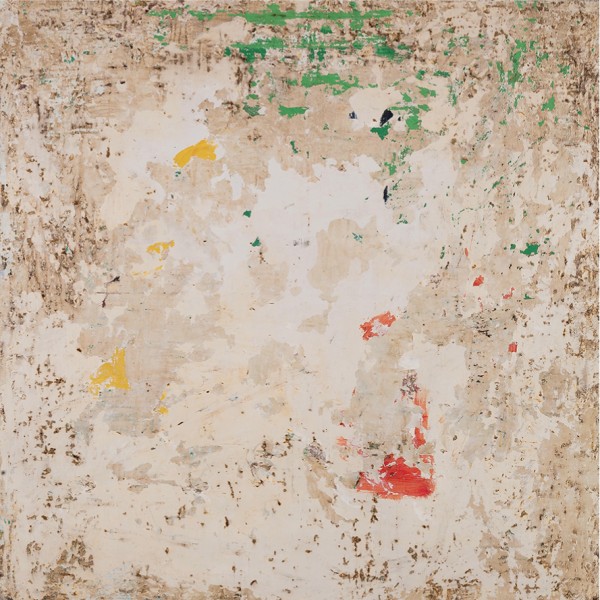
Martin Pearce
Visually noisy yet neutral in tone, the 11 abstract non-compositions that make up Guelph-based artist Martin Pearce’s “Mud and Iron” seem to long for the palliative, soft-on-the-eyes aesthetic of an off-white wall. Up close, though, the futility of that longing emerges in the violent traces of Pearce’s process, by which paint and encaustic wax have not only been dabbed and brushed into thick layers but also scraped off, bored into and chipped away, revealing a blindingly complex catastrophe of colour and substance.
-
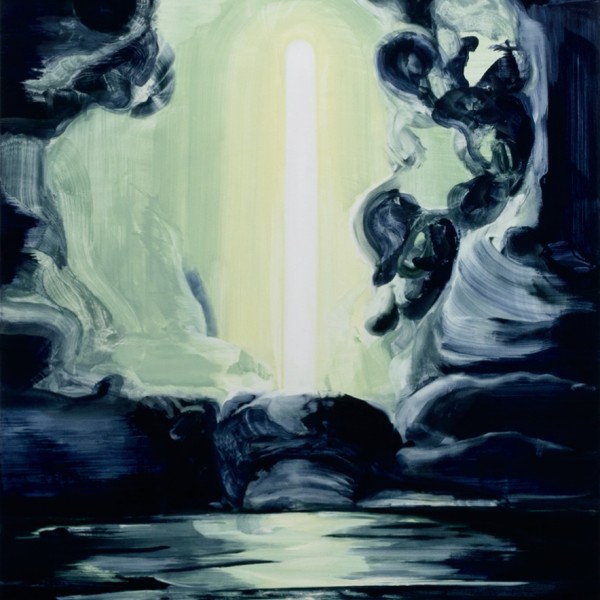
Laura Findlay
In Laura Findlay’s new exhibition, “Tuff,” mountains rise and fall with volcanic potential. In Chimney a towering plume of red-orange smoke spews out of a blue-black cornice that’s sharply opaque against a background of hazy peaks and swirling clouds, tinted the same peach as the sky. Beside it, Everything After the Lake is a font of lava launching upwards, bright negative white exploding out of a yellow lake. They are images of geology running at its fastest pace, of island-forming, mountain-cracking forces that make tectonic movements visible to human eyes and remake landscapes from rivers of flowing plastic rock.
-
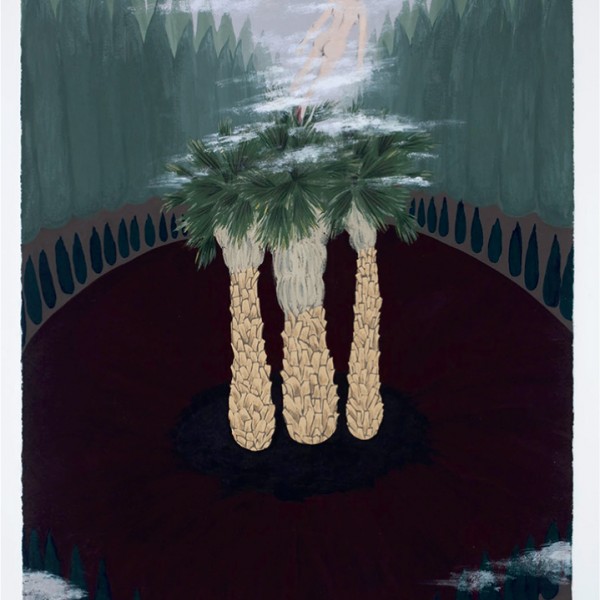
Mira Schor
Looking back at journals or artworks made as a student can be painful as well as nostalgic, exposing a soft underbelly, ideas raw, not yet finessed. But examining such material reveals the groundwork laid in those early days for what followed. “California Paintings: 1971–1973,” an exhibition of Mira Schor’s early works, many never exhibited before, or not since her MFA show at CalArts in 1973, reveals the foundation of Schor’s practice and maintains their relevance nearly 50 years later. The “California Paintings” here map Schor’s progression as a graduate student, to the completion of her MFA at CalArts in the early 1970s, where she enrolled in the now-legendary Feminist Art Program before she herself became a respected feminist painter and writer.
Haven’t found what you're looking for? Explore our index for material not available online.

